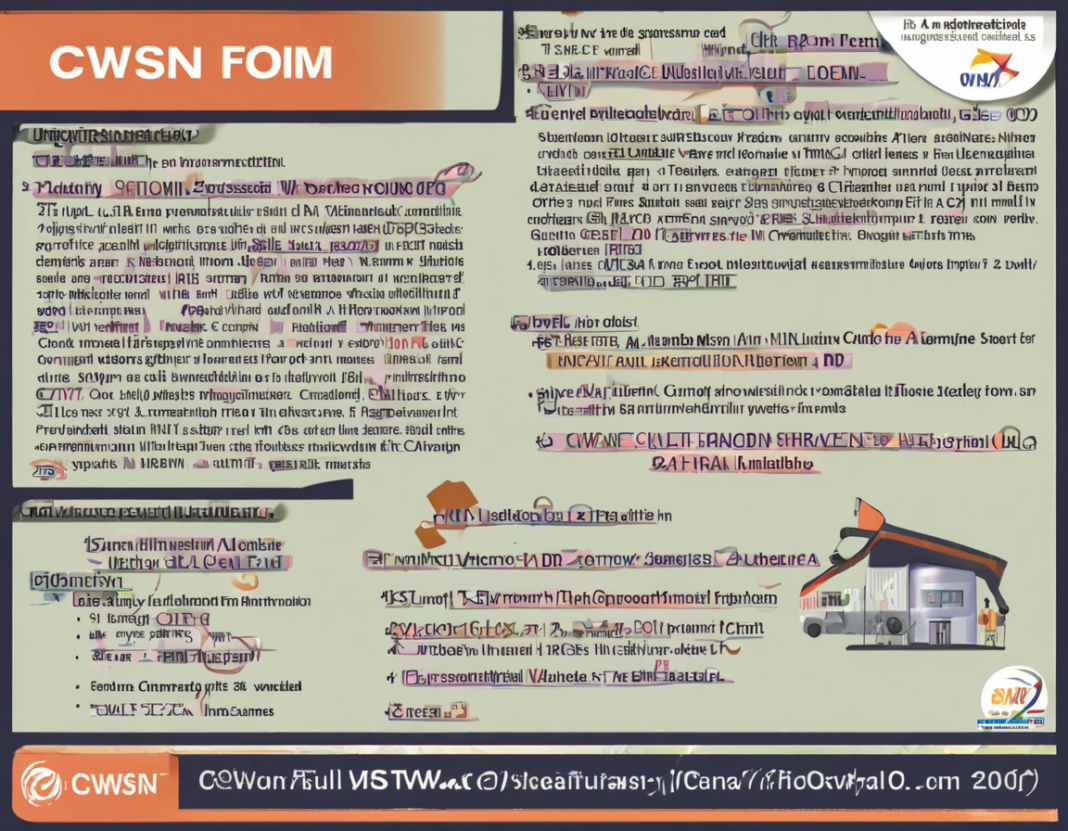In the field of education, especially in the context of special education, the acronym CWSN stands for Children with Special Needs. These are individuals who require additional support and services in order to address their unique challenges and help them reach their full potential. CWSN include children with physical disabilities, developmental delays, learning disabilities, behavioral disorders, and other exceptionalities that may impact their educational experience.
Understanding CWSN
Children with Special Needs (CWSN) can encompass a wide range of conditions and challenges that may affect a child’s ability to learn and thrive in a traditional classroom setting. It is important for educators, parents, and other stakeholders to understand the needs of these children in order to provide them with the necessary support and accommodations.
Types of CWSN
-
Physical Disabilities: Children who have physical impairments that may affect their mobility or ability to participate in activities.
-
Developmental Delays: Children who are slower to reach milestones in areas such as speech, motor skills, or social development.
-
Learning Disabilities: Children who have difficulties with reading, writing, math, or other academic skills despite having average or above-average intelligence.
-
Behavioral Disorders: Children who exhibit challenging behaviors that may interfere with their learning and social interactions.
Supporting CWSN in Education
Educators play a crucial role in supporting Children with Special Needs (CWSN) and helping them succeed in the classroom. Here are some strategies to create an inclusive and supportive learning environment:
Individualized Education Plan (IEP)
An Individualized Education Plan (IEP) is a personalized plan that outlines the specific goals, accommodations, and services that a child with special needs will receive. This plan is developed collaboratively by teachers, parents, and specialists to address the unique needs of the child.
Differentiated Instruction
Using differentiated instruction, teachers can tailor their teaching methods and materials to meet the diverse needs of students in their classroom. This approach allows children with special needs to access the curriculum at their own level and pace.
Assistive Technology
Assistive technology tools such as speech-to-text software, graphic organizers, and adaptive devices can help children with special needs access the curriculum and communicate more effectively. Integrating these tools into the classroom can enhance learning opportunities for CWSN.
Inclusive Classroom Practices
Creating an inclusive classroom environment where all students feel valued and supported can benefit children with special needs. Encouraging peer interactions, promoting empathy, and fostering a culture of acceptance can help create a sense of belonging for CWSN.
FAQs about CWSN
Q1: What are the common types of special needs children may have?
A1: Common types of special needs include physical disabilities, developmental delays, learning disabilities, and behavioral disorders.
Q2: How can educators support children with special needs in the classroom?
A2: Educators can support children with special needs by creating individualized education plans, using differentiated instruction, incorporating assistive technology, and promoting inclusive classroom practices.
Q3: What is an Individualized Education Plan (IEP)?
A3: An Individualized Education Plan (IEP) is a personalized plan that outlines the specific goals, accommodations, and services that a child with special needs will receive in school.
Q4: Why is early intervention important for children with special needs?
A4: Early intervention can help identify and address the needs of children with special needs at a young age, improving their long-term outcomes and increasing their chances of success in school and beyond.
Q5: How can parents advocate for their child with special needs?
A5: Parents can advocate for their child with special needs by staying informed about their child’s rights, communicating effectively with educators and service providers, and being actively involved in the educational process.
In conclusion, understanding and supporting Children with Special Needs (CWSN) is essential for ensuring that every child has the opportunity to learn and grow to their full potential. By implementing inclusive practices, providing individualized support, and fostering a supportive environment, we can help CWSN thrive in the classroom and beyond.




